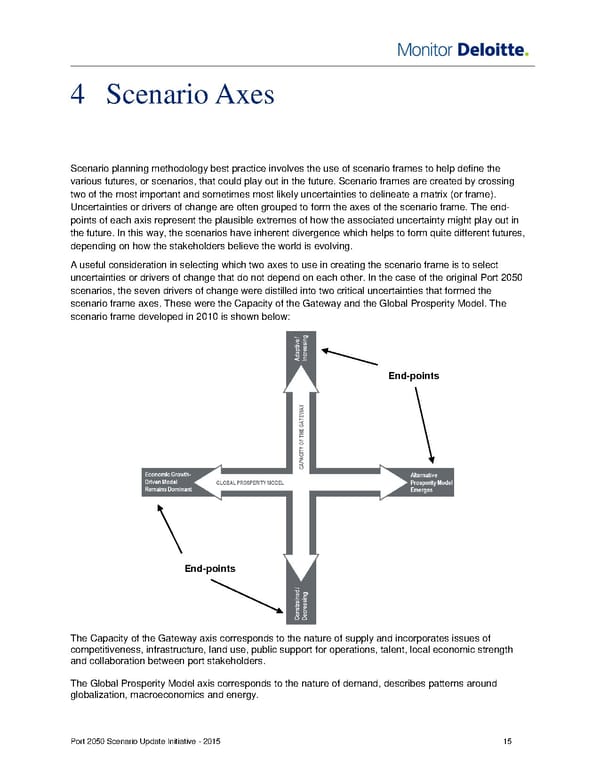4 Scenario Axes Scenario planning methodology best practice involves the use of scenario frames to help define the various futures, or scenarios, that could play out in the future. Scenario frames are created by crossing two of the most important and sometimes most likely uncertainties to delineate a matrix (or frame). Uncertainties or drivers of change are often grouped to form the axes of the scenario frame. The end- points of each axis represent the plausible extremes of how the associated uncertainty might play out in the future. In this way, the scenarios have inherent divergence which helps to form quite different futures, depending on how the stakeholders believe the world is evolving. A useful consideration in selecting which two axes to use in creating the scenario frame is to select uncertainties or drivers of change that do not depend on each other. In the case of the original Port 2050 scenarios, the seven drivers of change were distilled into two critical uncertainties that formed the scenario frame axes. These were the Capacity of the Gateway and the Global Prosperity Model. The scenario frame developed in 2010 is shown below: End-points End-points The Capacity of the Gateway axis corresponds to the nature of supply and incorporates issues of competitiveness, infrastructure, land use, public support for operations, talent, local economic strength and collaboration between port stakeholders. The Global Prosperity Model axis corresponds to the nature of demand, describes patterns around globalization, macroeconomics and energy. Port 2050 Scenario Update Initiative - 2015 15
 Monitor Deloitte - Final Report Page 16 Page 18
Monitor Deloitte - Final Report Page 16 Page 18